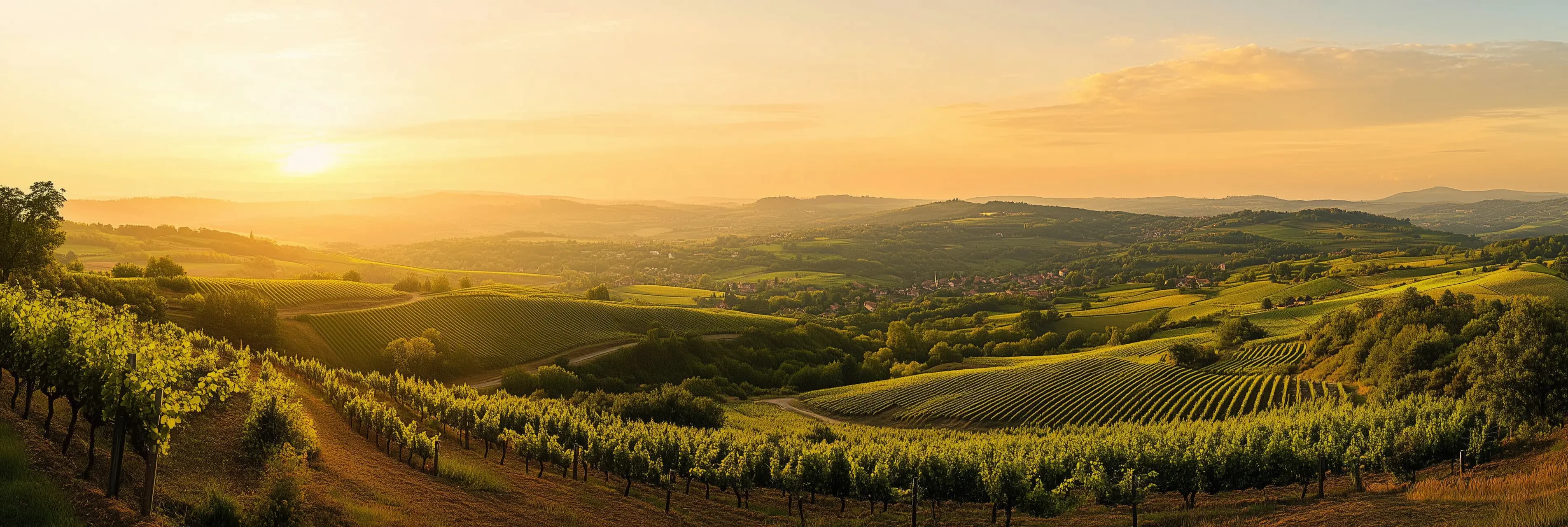Beaujolais Blanc: the white wine you've never heard of (but should be drinking)
When most people think of Beaujolais, they envision the vibrant reds made from Gamay grapes, especially the famous Beaujolais Nouveau. However, the region has a well-kept secret: Beaujolais Blanc. This lesser-known gem is made from Chardonnay, offering wine lovers a crisp and refreshing alternative to the region’s reds. With just a small fraction of Beaujolais’ production dedicated to white wines, these bottles remain under the radar, but those who discover them are often pleasantly surprised by their quality and versatility.
In this article, we'll dive into what makes Beaujolais Blanc special, where it's grown, and why you should consider adding it to your wine collection.
What is Beaujolais Blanc?
Beaujolais Blanc is a white wine made primarily from Chardonnay grapes, although a small amount of Aligoté, another white variety, is permitted in some areas. These wines are produced under both the Beaujolais AOC and the Beaujolais-Villages AOC designations. The Chardonnay grown here benefits from the same unique terroir that shapes the region’s famous reds, resulting in wines that are fresh, lively, and often more affordable than Chardonnay from nearby Bourgogne (Burgundy).
Where is Beaujolais Blanc produced?
Though the majority of Beaujolais wines are red, Beaujolais Blanc represents around 2-3% of the region’s production.
The best areas for Beaujolais Blanc are in the northern part of the region, where the soils are rich in limestone and clay, similar to the famous Chardonnay vineyards of Burgundy.
- Beaujolais AOC: The broader appellation where most Beaujolais Blanc is produced. These wines tend to be light, fresh, and easy to drink.
- Beaujolais-Villages AOC: This appellation covers higher-quality vineyards in more than 30 villages. Beaujolais Blanc from these areas tends to have more depth, minerality, and complexity. Notably, there is no white wine production in the Beaujolais Crus, as these areas are exclusively designated for Gamay-based red wines.
What does Beaujolais Blanc taste like?
Beaujolais Blancs are typically fresh and aromatic, offering a delightful balance between fruitiness and minerality. While styles can vary depending on the winemaker’s approach and the specific terroir, some common tasting notes include:
- Fruit flavors: Citrus (lemon, lime), stone fruits (peach, apricot), and sometimes green apple or pear.
- Floral aromas: White flowers like acacia and honeysuckle.
- Minerality: A subtle flinty or chalky quality, especially in wines from limestone-rich soils.
- Texture: Lighter Beaujolais Blancs have a crisp, refreshing mouthfeel, while those aged in oak may display more richness, with buttery or nutty notes. Overall, these wines are lively and refreshing, making them perfect for drinking young, although some higher-quality examples from Beaujolais-Villages can benefit from a few years of aging.
How does Beaujolais Blanc compare to other Chardonnays?
It’s natural to compare Beaujolais Blanc to the world-famous Chardonnay wines of nearby Burgundy, as they share the same grape variety and similar winemaking traditions.
However, there are several key differences:
- Price: Beaujolais Blanc is often much more affordable than Chardonnay from Burgundy, making it a great value for those looking to explore high-quality white wines without the hefty price tag.
- Style: While Burgundian Chardonnays, especially from regions like Meursault or Chablis, can be rich and complex, often with significant oak influence, Beaujolais Blanc tends to be lighter and more fruit-forward. It emphasizes freshness over power, though some Beaujolais Blancs from the Villages appellation can have a touch of oak aging for added complexity.
- Drinkability: Beaujolais Blanc is generally meant to be enjoyed young, within a few years of its release. Its bright acidity and crisp character make it a perfect choice for casual sipping or pairing with food.
Food Pairing with Beaujolais Blanc
One of the great strengths of Beaujolais Blanc is its versatility with food. Its bright acidity and fresh fruit flavors make it an ideal partner for a variety of dishes, especially lighter fare. Here are some classic pairings:
- Seafood: Try it with oysters, shrimp, or grilled white fish. The minerality in the wine enhances the brininess of the seafood.
- Salads and light appetizers: Fresh salads with goat cheese, citrus vinaigrettes, or grilled vegetables work beautifully with the wine’s crispness.
- Poultry: Roast chicken or turkey, especially when paired with herbs like tarragon or thyme, brings out the wine’s floral and citrus notes.
- Cheese: Mild, creamy cheeses such as Brie or Camembert pair well with Beaujolais Blanc, as do tangier options like fresh chèvre. For those who prefer a bit more richness in their whites, look for Beaujolais Blancs that have been aged in oak. These wines can stand up to heartier dishes like creamy pastas, buttery shellfish, or even lightly spiced Asian cuisine.
Why should you explore Beaujolais Blanc?
If you’re a fan of Chardonnay or white wines in general, Beaujolais Blanc offers a refreshing alternative to more well-known appellations. It’s perfect for those who enjoy crisp, mineral-driven wines with bright fruit flavors. Additionally, these wines provide excellent value, often delivering high quality at a fraction of the price of similar Burgundian Chardonnays. For wine enthusiasts looking to broaden their horizons, Beaujolais Blanc offers a chance to explore an underappreciated corner of one of France’s most famous regions. Whether you’re enjoying a glass on its own or pairing it with food, Beaujolais Blanc is a versatile and delightful wine that deserves a place in your cellar.
Beaujolais Blanc may not have the fame of the region’s red wines, but it offers an exciting and affordable alternative for wine lovers seeking fresh, vibrant, and food-friendly whites. With its Chardonnay-driven profile, Beaujolais Blanc bridges the gap between approachable and sophisticated, making it a wine worth discovering. So next time you’re reaching for a bottle of Beaujolais, don’t overlook the whites—they might just surprise you.

